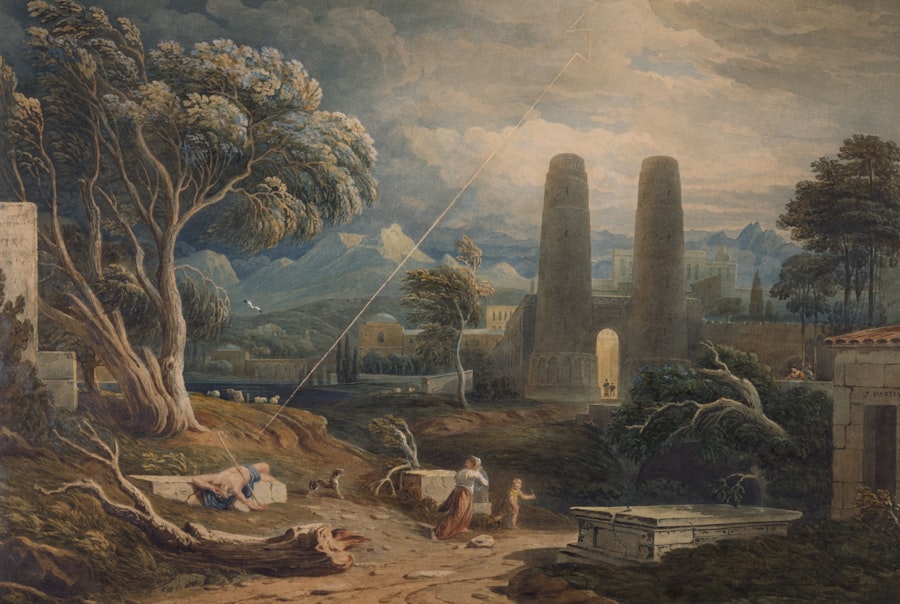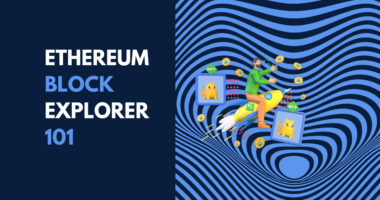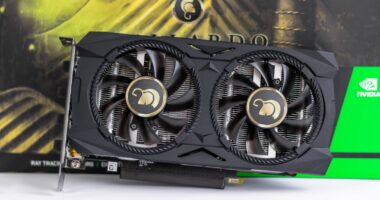Non-fungible tokens (NFTs) are unique digital assets that represent ownership or authenticity of specific digital items, such as artwork, videos, or music. Unlike fungible cryptocurrencies like Bitcoin, NFTs cannot be exchanged on a one-to-one basis due to their unique nature. NFTs utilize blockchain technology, a decentralized digital ledger that records transactions across multiple computers.
This ensures each NFT’s uniqueness and prevents replication. When an artist creates an NFT, they generate a digital certificate of ownership for their artwork, which can be traded on online marketplaces. The blockchain permanently records ownership and provenance, providing transparency and security for both artists and buyers.
To create an NFT, artists use specialized NFT marketplaces to upload their digital artwork and mint it into a token. Minting involves creating a unique token on the blockchain that represents the specific piece of art. Once minted, NFTs can be bought and sold using cryptocurrency, with ownership and transaction history securely stored on the blockchain.
This process has created new opportunities for digital artists to monetize their work and reach a global audience of collectors and art enthusiasts.
Key Takeaways
- NFTs are unique digital assets that are stored on a blockchain and represent ownership of a specific item or piece of content.
- Digital artists can create NFT art by using blockchain platforms to mint and sell their work, ensuring authenticity and scarcity.
- Choosing the right platform is crucial for selling NFT art, with options like OpenSea, Rarible, and Foundation offering different features and fees.
- Marketing NFT art involves building a brand, engaging with the community, and leveraging social media and other channels to attract buyers.
- Navigating legal and copyright issues is essential when creating and selling NFT art, as it involves ownership and intellectual property rights.
Creating NFT Art: Tips and Techniques for Digital Artists
Developing a Unique Style and Aesthetic
NFT collectors are drawn to unique and visually striking pieces, so artists should focus on developing their own style and aesthetic to differentiate themselves from the competition. This involves creating high-quality, original artwork that stands out in a crowded marketplace.
Adding Depth and Emotional Resonance
In addition to visual appeal, digital artists should also consider the concept and story behind their artwork. NFT collectors are often interested in the narrative and meaning behind a piece, so artists should strive to create work that resonates with their audience on a deeper level. This could involve exploring themes such as identity, social commentary, or personal experiences, adding depth and emotional resonance to the artwork.
Technical Considerations and Community Engagement
Furthermore, artists should pay attention to the technical aspects of creating NFTs, such as file formats, resolution, and compatibility with different platforms. Ensuring that the artwork is optimized for display on various devices and marketplaces can enhance its marketability and appeal to a wider audience. Additionally, digital artists should be mindful of the potential for collaboration and interaction within the NFT community, exploring features such as royalties for secondary sales, unlockable content, and interactive elements that can add value to the artwork and engage collectors.
Choosing the Right Platform: Where to Sell Your NFT Art

When it comes to selling NFT art, choosing the right platform is crucial for reaching the right audience and maximizing sales potential. There are several popular NFT marketplaces that cater to different types of digital art and offer various features for artists and collectors. One of the most well-known platforms is OpenSea, which supports a wide range of digital assets, including art, domain names, virtual worlds, and more.
OpenSea provides a user-friendly interface for minting and selling NFTs, as well as tools for promoting and managing collections. Another popular platform is Rarible, which allows artists to create and sell their own customizable NFTs without coding knowledge. Rarible also offers features such as governance tokens and decentralized autonomous organizations (DAOs), enabling artists to participate in platform governance and decision-making.
For digital artists focused on 3D art and virtual reality, platforms like SuperRare and KnownOrigin provide specialized marketplaces for showcasing and selling immersive digital experiences. In addition to these dedicated NFT marketplaces, some mainstream platforms have also started to support NFT sales, such as Foundation, Zora, and NBA Top Shot. These platforms offer unique opportunities for artists to tap into existing communities and reach new audiences outside of the traditional crypto art scene.
Ultimately, the choice of platform will depend on the type of artwork being sold, the target audience, and the specific features and tools that best align with the artist’s goals and preferences.
Marketing Your NFT Art: Building a Brand and Attracting Buyers
Marketing plays a crucial role in the success of selling NFT art, as it helps artists build a brand identity and attract potential buyers to their work. Building a strong brand presence involves creating a cohesive visual identity, storytelling, and engaging with the community through social media and other channels. Artists should develop a consistent aesthetic across their artwork, website, social media profiles, and promotional materials to establish a recognizable brand that resonates with their target audience.
Storytelling is another powerful tool for marketing NFT art, as it allows artists to share the inspiration, process, and meaning behind their work with potential buyers. By crafting compelling narratives around their artwork, artists can create emotional connections with collectors and deepen their appreciation for the pieces they are selling. This could involve sharing behind-the-scenes content, artist interviews, or personal anecdotes that provide insight into the creative journey and vision behind the art.
Engaging with the community is also essential for marketing NFT art effectively. Artists can leverage social media platforms, online forums, and virtual events to connect with collectors, fellow artists, and industry influencers. By participating in conversations, sharing insights, and supporting other creators, artists can build relationships within the NFT community and expand their reach to potential buyers.
Collaborations with other artists or brands can also help increase visibility and attract new audiences to the artist’s work. Furthermore, artists should consider leveraging emerging technologies such as augmented reality (AR) or virtual reality (VR) to create immersive experiences around their NFT art. By offering interactive elements or exclusive content that enhances the value of their artwork, artists can differentiate themselves in a competitive market and capture the attention of tech-savvy collectors.
Navigating the Legal and Copyright Issues of NFT Art
Navigating the legal and copyright issues surrounding NFT art is essential for both artists and buyers to protect their rights and ensure compliance with intellectual property laws. When creating NFTs, artists should be mindful of copyright ownership and licensing agreements for the digital content they are tokenizing. It’s important to verify that they have the legal right to sell or license the artwork as an NFT without infringing on any third-party rights.
For digital artists creating original work, it’s advisable to register their copyrights with relevant authorities to establish legal ownership and protection for their creations. This can help prevent unauthorized use or reproduction of their artwork by others in the future. Additionally, artists should consider including clear terms of use and licensing agreements when selling NFTs to specify how buyers can use or display the digital content they have purchased.
Buyers of NFT art should also be aware of the legal implications of owning digital assets on the blockchain. While owning an NFT represents ownership of a unique token associated with a specific piece of art, it does not necessarily confer exclusive rights to reproduce or distribute the underlying content. Buyers should carefully review the terms of sale and any accompanying licenses to understand what rights they have acquired with the purchase of an NFT.
As the legal landscape surrounding NFTs continues to evolve, artists and buyers should seek legal counsel or guidance from professionals specializing in intellectual property law to ensure they are compliant with regulations and best practices in the digital art space.
Managing Your NFT Sales: Handling Transactions and Payments in ETH, BTC, and Other Cryptocurrencies

Setting Up Cryptocurrency Wallets
When selling NFT art, artists need to familiarize themselves with the process of setting up cryptocurrency wallets to receive payments from buyers. Cryptocurrency wallets are digital tools that allow users to store, send, and receive cryptocurrencies securely.
Choosing the Right Wallet for NFT Sales
For Ethereum-based NFTs, artists will need an Ethereum wallet compatible with ERC-721 tokens, which are used to represent non-fungible assets on the blockchain. Popular Ethereum wallets include MetaMask, MyEtherWallet, Trust Wallet, and Coinbase Wallet. These wallets provide unique addresses that artists can share with buyers to receive payments for their NFT sales. In addition to Ethereum wallets, artists may also consider accepting payments in Bitcoin or other cryptocurrencies supported by NFT marketplaces.
Managing Transactions and Payments
When managing NFT sales across multiple platforms or marketplaces, it’s important for artists to keep track of their transactions and payments in different cryptocurrencies. This may involve using portfolio management tools or cryptocurrency accounting software to reconcile sales data from various sources and monitor their earnings from NFT sales accurately. Furthermore, artists should stay informed about cryptocurrency market trends and price fluctuations to make informed decisions about when to convert their earnings into fiat currency or other investments.
Staying Up to Date: Keeping Abreast of ETH and BTC News and Trends in the NFT Art World
Staying up to date with news and trends related to Ethereum (ETH) and Bitcoin (BTC) is essential for artists navigating the rapidly evolving landscape of NFT art. Both ETH and BTC play significant roles in powering NFT transactions on blockchain networks, influencing market dynamics, fees, gas prices, and overall adoption within the digital art space. Artists should monitor developments in Ethereum’s ecosystem, such as network upgrades (e.g., Ethereum 2.0), scalability solutions (e.g., layer 2 solutions like Optimism or zkSync), gas fee optimizations (e.g., EIP-1559), or changes in smart contract standards (e.g., ERC-721 or ERC-1155).
These updates can impact how NFTs are created, bought, sold, or interacted with on Ethereum-based platforms. Similarly, keeping abreast of Bitcoin news can provide insights into broader cryptocurrency market trends that may influence collector behavior or investment patterns related to NFT art. Artists should pay attention to Bitcoin’s price movements, regulatory developments affecting BTC adoption or usage, technological advancements (e.g., Lightning Network), or institutional interest in Bitcoin as a digital asset class.
In addition to technical updates related to ETH and BTC networks, artists should also follow industry news about notable NFT sales, collaborations between artists and brands using NFTs, emerging use cases for digital collectibles beyond art (e.g., gaming or virtual real estate), or regulatory discussions impacting the broader NFT ecosystem. By staying informed about ETH and BTC news and trends in the NFT art world, artists can adapt their strategies for creating, marketing, selling, or collecting digital assets more effectively while capitalizing on emerging opportunities within this dynamic space. In conclusion, understanding how NFTs work involves grasping their unique properties as non-fungible digital assets built on blockchain technology.
Creating compelling NFT art requires a blend of artistic vision, technical expertise in digital media production techniques tailored for tokenization purposes. Choosing the right platform for selling your NFT art is crucial for reaching your target audience effectively while maximizing your sales potential through strategic marketing efforts that build your brand identity while attracting potential buyers through storytelling techniques that resonate emotionally with your audience while engaging with your community through social media channels or virtual events.
Navigating legal issues surrounding copyright ownership is essential for protecting your rights as an artist while ensuring compliance with intellectual property laws when creating original work registered with relevant authorities while including clear terms of use when selling your NFTs specifying how buyers can use or display your digital content they have purchased.
Managing your NFT sales involves handling transactions in cryptocurrencies such as Ethereum (ETH), Bitcoin (BTC), or other digital assets supported by marketplaces while staying informed about news related to Ethereum (ETH) & Bitcoin (BTC) is essential for navigating trends impacting collector behavior & investment patterns related to your NFT art while adapting your strategies effectively within this dynamic space.
FAQs
What is NFT art?
NFT art refers to digital artwork that is tokenized and sold using blockchain technology. Each piece of NFT art is unique and has a digital certificate of ownership, known as a non-fungible token (NFT).
How do you make NFT art?
To make NFT art, artists create digital artwork using software such as Adobe Photoshop, Procreate, or other digital art tools. Once the artwork is created, it is minted as an NFT on a blockchain platform, such as Ethereum or Tezos, using a specialized marketplace.
How do you sell NFT art?
NFT art can be sold on various NFT marketplaces, such as OpenSea, Rarible, or Foundation. Artists can list their NFT art for sale, set a price, and receive payment in cryptocurrency when a buyer purchases their artwork.
What are the benefits of selling NFT art?
Selling NFT art allows artists to reach a global audience, receive direct payments in cryptocurrency, and retain ownership and control over their artwork. Additionally, NFT art sales can generate royalties for artists when their artwork is resold in the future.
What are some tips for success in selling NFT art?
Some tips for success in selling NFT art include creating high-quality and unique artwork, building a strong online presence and community, engaging with collectors and other artists, and staying informed about the latest trends and developments in the NFT art space.





